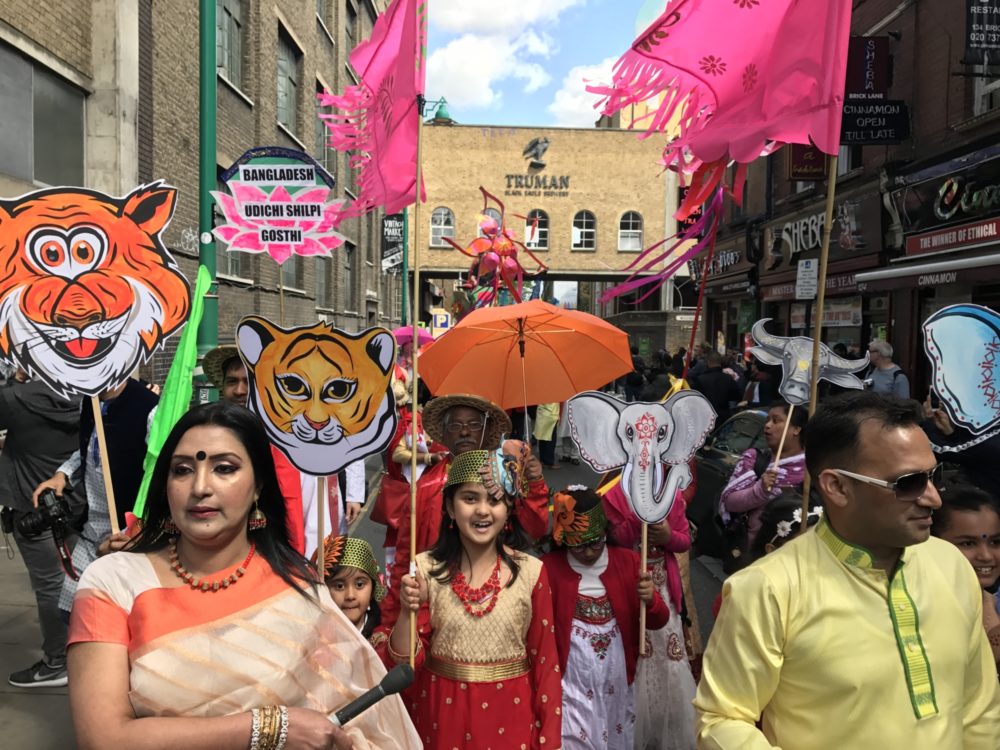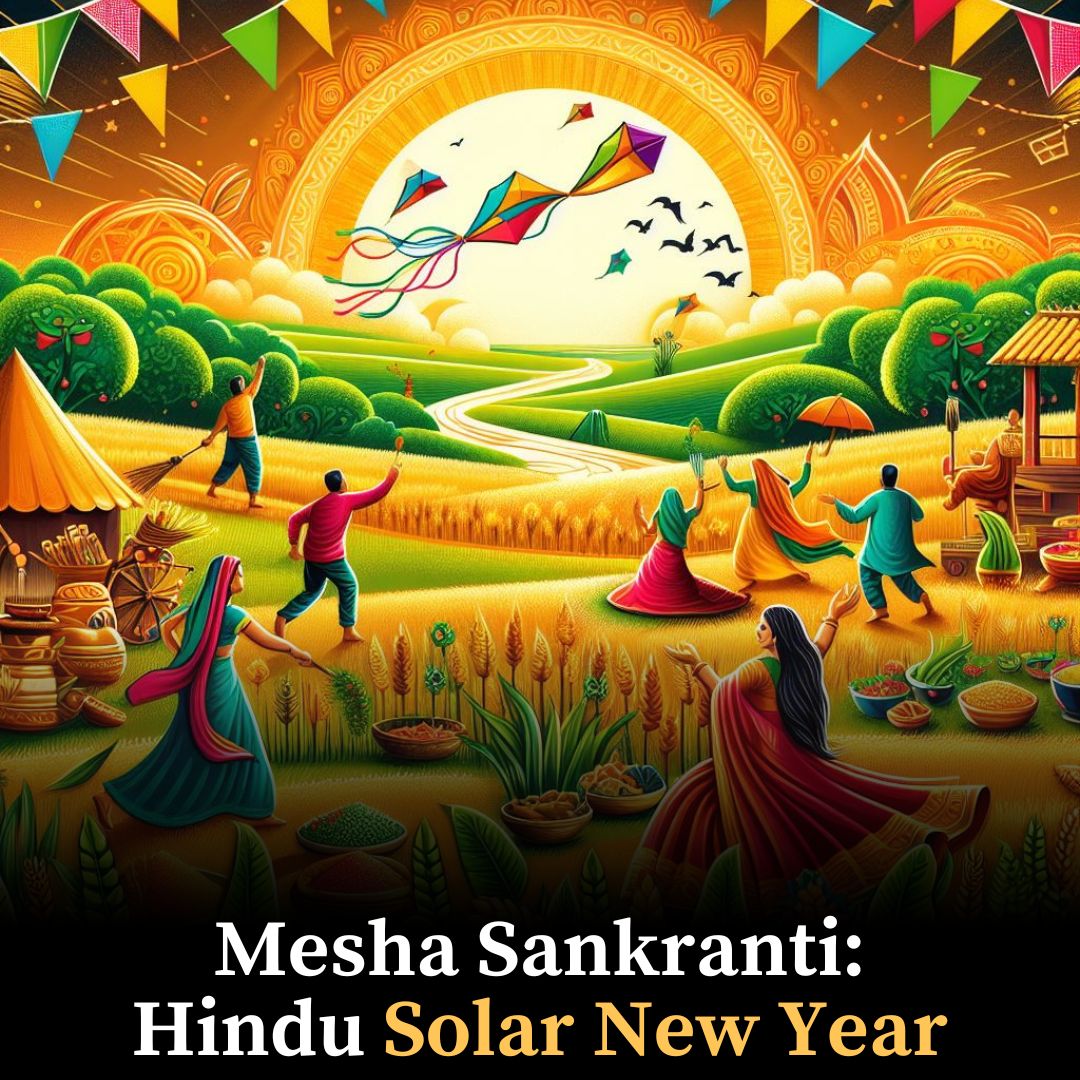The Sankranti (transit) of the Sun into Mesha Rashi (Taurus) is celebrated as the New Year* by Hindu communities that follow the Solar Hindu calendar. This largely includes the Assamese (Rongali Bihu), Bengali (Pohela Boishakh), Bodo (Bwisagu), Maithali (Jur-Sital), Malayalam (Vishu), Odia (Pana Sankranti), Punjabi (Vaisakhi), Tamil (Puthandu) and Tullu (Bisu) Hindu communities. The name Vaisaikhi or Boishak is derived from the Sanskrit ‘Vaishak’ – the name of the Hindu Solar month that begins on this day. In most of these regions, the festival is also marked as a harvest festival.
In addition to Hindus, Mesha Sankranti also marks the New Year for many Buddhist communities across Asia and also a sacred day in Sikhism (differences of opinion exist if it is the Sikh New Year). Mesha Sankranti is recognised as New Year and a national holiday in several countries across the Subcontient and Indo-China such as Nepal, Bangladesh, Sri Lanka, Laos and Thailand.

About the image: Parade to mark Pohela Boishakh in East London; one of the largest celebrations of the Bengali New Year in the diaspora. In addition to Hindus and Buddhists many Bangladeshi Muslims and Athiests celebrate Pohela Boishakh.
In recent years in both West Bengal and Bangladesh, there have been attempts to disconnect this festival from its Dharmic roots by a claim that Pohela Boishak was started by the Mughal ruler Akbar. This theory is easily debunked by the fact that Bengalis were observing their new year on Mesha Sankranti (in line with other regions of Bharat) as far back as the Gupta era, centuries before the Islamic invasion.
*Mesha Sankranti usually occurs on 13th, 14th or 15th April. Differences in the date of this festival across regional communities reflect variations in how the first day of the year is determined.
Photo from @EEALondon via X

